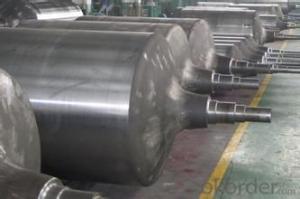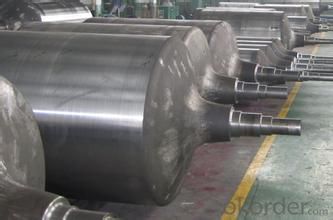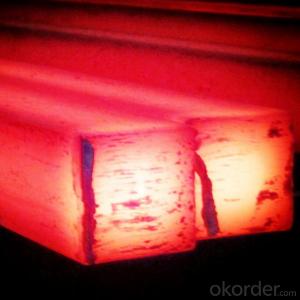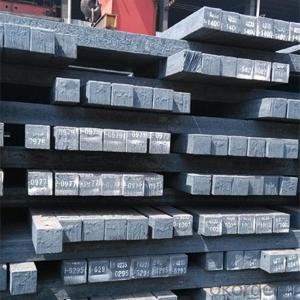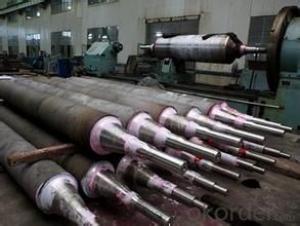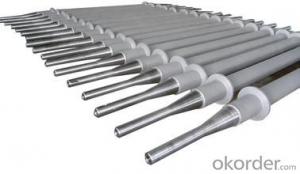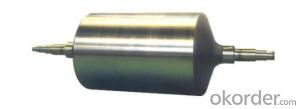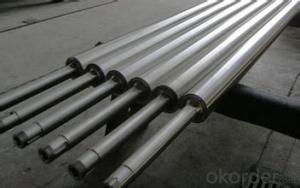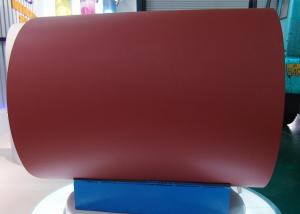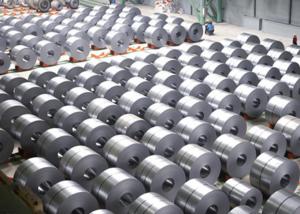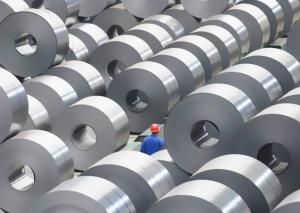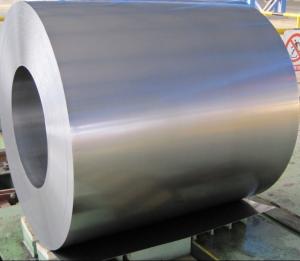Heat-resistant Furnace Roll for galvanizing line and annealing
- Loading Port:
- Tianjin
- Payment Terms:
- TT OR LC
- Min Order Qty:
- 1000 PCS
- Supply Capability:
- 10000 PCS/month
OKorder Service Pledge
OKorder Financial Service
You Might Also Like
Quick Details
| Condition: | New | Type: | Other | Usage: | Heat Treatment Furnace |
| Place of Origin: | Brand Name: | Weight: | Depend on size and materials | ||
| Certification: | ISO9001:2008;SGS | Warranty: | 12 months | After-sales Service Provided: | Engineers available to service machinery overseas |
| Certificate: | ISO9001:2008 | Application: | Continuous galvanizing line; Continuous annealing line | Technics: | Centrifugal casting |
| Standard: | ANSI, ASTM, ASME, DIN, GB | Material: | Stainless steel | Inspection: | Self-inspection or third party inspection |
| Advantage: | Complete in-house inspection facility to assure quality |
Packaging & Delivery
| Packaging Detail: | wooden package, Seaworthy package or as required |
| Delivery Detail: | according to contract |
Specifications
Furnace roll
1.Standard:ANSI, ASTM, ASME, DIN, GB
2.Certificate: ISO9001:2008
3.Size: according to drawing.
Product Description
Packaging & Shipping
Wooden case; Seaworthy package or according to requirements.
- Q: What are the different types of steel pipes and tubes available?
- There are various types of steel pipes and tubes available, including seamless pipes, welded pipes, ERW (Electric Resistance Welded) pipes, LSAW (Longitudinal Submerged Arc Welded) pipes, SSAW (Spiral Submerged Arc Welded) pipes, and galvanized pipes. These types differ in their manufacturing processes, applications, and specific characteristics, offering options for different industries and purposes.
- Q: What are the different types of steel products used in the manufacturing of toys and games?
- There are various types of steel products used in the manufacturing of toys and games, including steel wires, steel sheets, and steel rods. These materials are commonly used to create structural components, such as frames or supports, as well as smaller parts like connectors or joints. The steel used in toy and game manufacturing is often chosen for its strength, durability, and ability to withstand wear and tear.
- Q: How is steel forgings inspected for quality assurance?
- Steel forgings are inspected for quality assurance through various methods such as visual inspection, dimensional measurements, non-destructive testing techniques like ultrasonic testing or magnetic particle inspection, and mechanical testing. These inspections ensure that the forgings meet the required specifications, including dimensions, surface finish, and internal soundness. Additionally, third-party certifications and audits may be conducted to ensure compliance with industry standards and customer requirements.
- Q: What are the different types of steel wires and their applications in the automotive industry?
- There are several types of steel wires commonly used in the automotive industry, including high carbon steel wire, stainless steel wire, and alloy steel wire. High carbon steel wire is known for its strength and durability, making it suitable for applications such as tire reinforcement, suspension springs, and seat frames. Stainless steel wire, on the other hand, offers corrosion resistance and is often used in exhaust systems, fuel lines, and brake cables. Lastly, alloy steel wire combines different elements to enhance specific properties, such as tensile strength or heat resistance, and finds applications in components like engine valves and transmission gears.
- Q: What are the different types of steel profiles and their applications?
- There are several different types of steel profiles, each with their own specific applications. Some common types include I-beams, which are used in construction for structural support; C-channels, which are often used in industrial applications for framing and support; angle profiles, which are used for corner reinforcement and bracing; and flat bars, which are commonly used in manufacturing and construction for support and framing. Other types of steel profiles include round bars, square bars, and T-sections, each with their own unique applications in various industries.
- Q: What are the factors to consider when selecting the right type of steel for a specific application?
- When selecting the right type of steel for a specific application, there are several factors that need to be considered. These factors include the required strength and hardness of the steel, its corrosion resistance, its machinability, as well as its heat resistance and ability to withstand extreme temperatures. Additionally, factors such as cost, availability, and the specific conditions under which the steel will be used should also be taken into account. By evaluating these factors, one can make an informed decision and choose the most suitable type of steel for the intended application.
- Q: How is steel used in the construction of sports stadiums and arenas?
- Steel is used extensively in the construction of sports stadiums and arenas due to its strength, durability, and versatility. It is used to create the framework and support structure of the building, including the roof, columns, beams, and trusses. Steel allows for large, open spaces without the need for excessive support columns, providing unobstructed views for spectators. Additionally, steel is used in the construction of seating areas, staircases, and walkways, ensuring safety and stability. Overall, steel plays a crucial role in creating the impressive and functional structures necessary for modern sports venues.
- Q: How do steel products withstand extreme temperatures and weather conditions?
- Steel products are able to withstand extreme temperatures and weather conditions due to their inherent strength and durability. Steel has a high melting point, making it resistant to heat, and its composition allows it to maintain its structural integrity under severe weather conditions such as strong winds, heavy snow, or intense rain. Additionally, steel can be coated with protective layers such as galvanization or paint, which further enhances its resistance to corrosion and rust.
- Q: How is steel plate heat-treated for optimal strength?
- Steel plate is heat-treated for optimal strength through a process called quenching and tempering. First, the steel plate is heated to a high temperature, known as the austenitizing temperature, which allows the carbon in the steel to dissolve uniformly. It is then rapidly cooled by immersing it in a quenching medium, such as oil or water, to transform the crystal structure into a hard martensitic phase. Subsequently, the plate is reheated to a lower temperature and held for a specific period to temper the martensite, reducing its brittleness while maintaining a significant level of strength. This heat treatment method enhances the hardness, toughness, and overall mechanical properties of the steel plate, making it ideal for various applications requiring optimal strength.
- Q: What are the safety regulations and standards for steel product manufacturing?
- The safety regulations and standards for steel product manufacturing vary depending on the country and industry. However, common safety guidelines include proper handling and storage of raw materials, the use of personal protective equipment (PPE) by workers, implementation of proper ventilation systems to control airborne contaminants, regular equipment maintenance and inspections, adherence to machine guarding protocols, and ensuring proper training and education for employees to minimize hazards and accidents. Additionally, steel manufacturers are often required to comply with specific industry standards such as ISO 9001 for quality management and ISO 14001 for environmental management.
Send your message to us
Heat-resistant Furnace Roll for galvanizing line and annealing
- Loading Port:
- Tianjin
- Payment Terms:
- TT OR LC
- Min Order Qty:
- 1000 PCS
- Supply Capability:
- 10000 PCS/month
OKorder Service Pledge
OKorder Financial Service
Similar products
Hot products
Hot Searches
Related keywords
